
- Quick contact : 9447749270
-
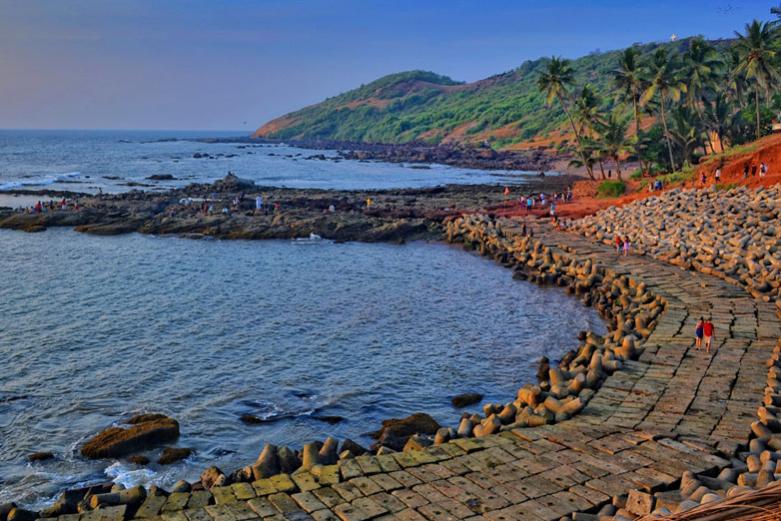 Anjuna Beach Lazing holidaymakers.
Anjuna Beach Lazing holidaymakers. -
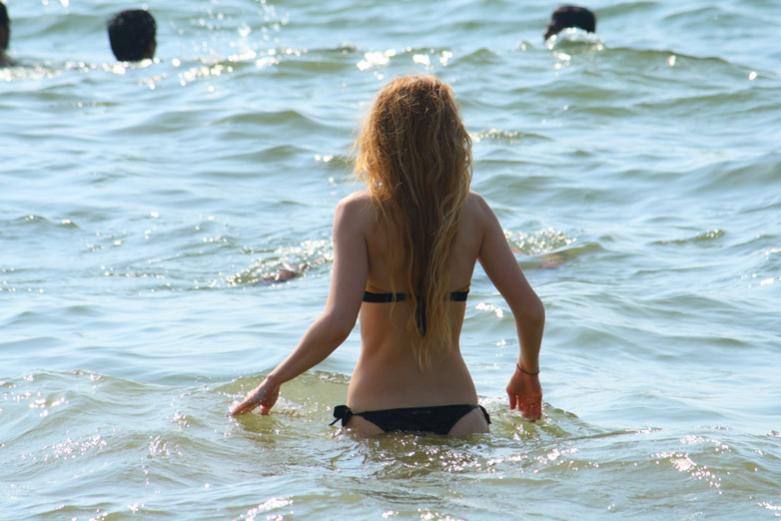 Calangute Beach Queen of Beaches.
Calangute Beach Queen of Beaches. -
 Benaulim beach Goa Benaulim beach is a very quiet beach.
Benaulim beach Goa Benaulim beach is a very quiet beach. -
 Butterfly beach Quietest and unexplored beaches in Goa.
Butterfly beach Quietest and unexplored beaches in Goa. -
 Hansa beach
Hansa beach -
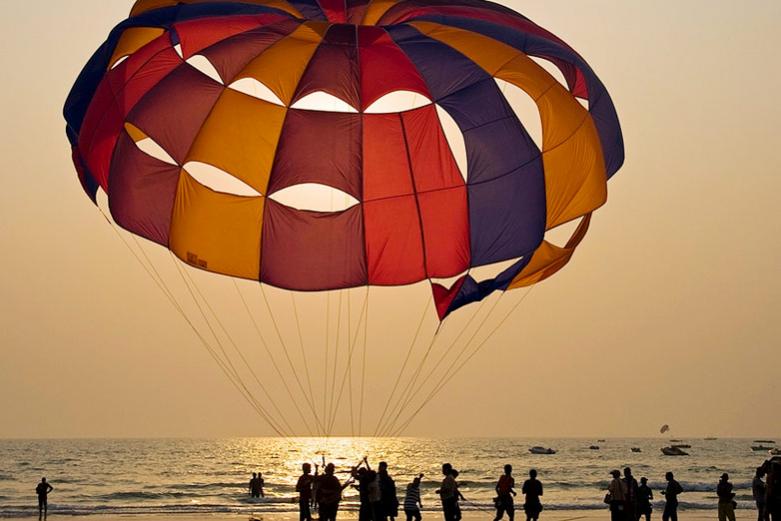 COLVA Colva is a hamlet,
COLVA Colva is a hamlet, -
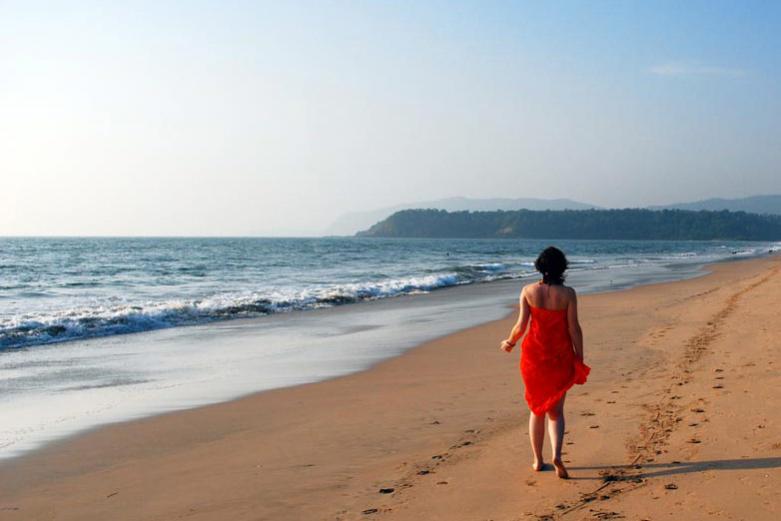 AGONDA BEACH ‘The Silent Beach’
AGONDA BEACH ‘The Silent Beach’ -
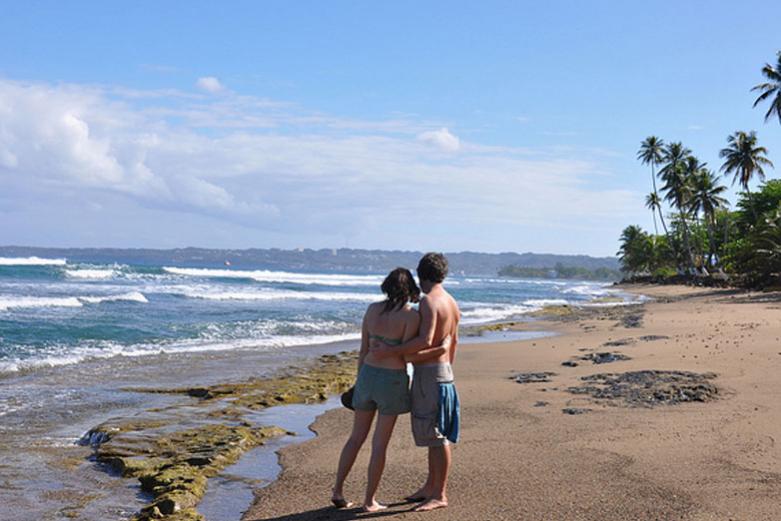 AGUADA BEACH Located towards the northern part of Goa
AGUADA BEACH Located towards the northern part of Goa -
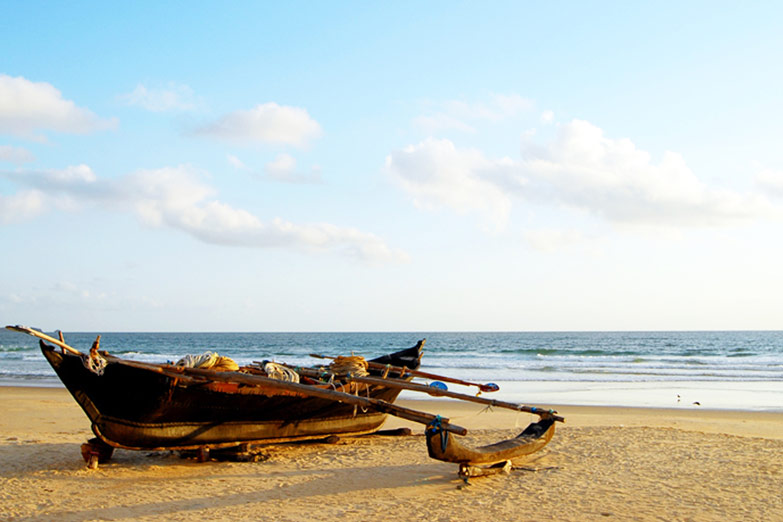 CAVELOSSIM-MOBOR Surroundings and pleasant atmosphere.
CAVELOSSIM-MOBOR Surroundings and pleasant atmosphere.

Anjuna Beach
The Anjuna beach is known for its full-moon (acid house) parties. Held for and by young tourists, these parties have attracted thousands of tourists. The trance party with dance, frolic, and merriment goes all night besides the fire. It is just the right place for lazing holidaymakers.
Besides the calm waters of the Arabian Sea lapping softly on the Indian shore, Anjuna comes alive with its ever-famous full-moon parties and the Wednesday flea market to take one onto a trance trip.
Anjuna Beach has been the haunt of the flower generation in the sixties and is now popular with the younger generations. It became popular because of its Trance Parties and the Hippies who tried to fuse the Eastern spiritual traditions with Western music, ideas and art.
Anjuna is a small village in north Goa and is popularly called the freak capital in the world. Its significant tourist spots are the magnificent Albuquerque Mansion built in 1920 (flanked by octagonal towers and an attractive Mangalore tile-roof), the Mascarenhas Mansion, and the Chapora Fort.
Every Wednesday, at around 11 a.m., Anjuna breaks into a riot of colors. Lines of vehicles full of tourists start virtually raising clouds of dust in this area. Whatever one needs, from a used paperback to a haircut, one would find it here. The flea market is a heaven for hardcore shoppers and good bargainers, to bid on wonderful blends of Tibetan, Kashmiri and Gujarati trinkets and handicrafts, European snacks, cassettes of a noisy brand of music called 'Goa Trance', artificial ornaments carvings and T-shirts. An elephant ride and a photograph with a fake sadhu or a fake snake charmer can also be found here.
There are plenty of guest houses around the village, and even a couple of hotels. Someone planning a longer stay should look out for 'To Let' signs, as there are plenty of houses that are available on rent along the back lanes.

Calangute Beach
Calangute beach in Goa is also known as the Queen of Beaches. The period from November to February is the most pleasant to visit here. It's 15km from the capital city Panjim. The beach itself isn't anything special, with steeply shelving sand, however it's capacity is large enough to accommodate the huge number of high-season visitors.
The Calangute beach is usually crowded and the small resorts thrive in business during the holiday season. It is one of the most popular beach in Goa with a host of facilities to cater to visitors, including golden sand along the beach and water sports.
Calangute beach lies on the shores of the Arabian Sea of North Goa in India. Calangute is the most popular holiday destination in Goa. Excellent accommodation facilites are available, particularly at the tourist resorts and cottages. It has also become a good investment plan to buy properties in Goa.
The beach in Calangute is also the perfect tourist haven, completed with shacks and stalls under the shade of palm trees selling everything from fried prawns and beer, to trinkets made of seashells. Its rainbow hued canvas has welcomed everyone to it always although it became popular across the globe only after the hippies discovered it in the 60's.
One of the places worth visiting nearby is the St. Alex Church. The Church of St Alex greets the visitors with its two towers and a magnificent dome gracing the façade. The inside of the church is a display of the line and beauty of its architectural style and attractive altars.
Calangute's nightlife is surprisingly tame and provides a nice break from the wild parties at Anjuna. All but a handful of the bars wind up by 10.00 pm. One notable exception is Tito's at the Baga end of the beach, which stays open until after midnight in the off-season and into the small hours of the morning in late December and January.

Benaulim beach
Goa Benaulim beach is a very quiet beach. Benaulim beach in Goa starts where Colva beach ends. The best thing about Goa Benaulim beach is that it is still rather undiscovered by domestic tourists even though it is a famous beach for fishing.
At Goa Benaulim beach, one can just laze the day off soaking in the sun. Benaulim beach at Goa gives you the pleasure and satisfaction of being in Goa.
This is the beach when you just want to relax relax and relax. Apart from the lovely beach, there is the Church of St. John the Baptist which is situated on a hill beyond the village and is worth a visit.
On the arrival of mansoon, Feast of St. John the Baptist, (Sao Joao) is celebrated as a thanksgiving. Young men wearing crowns of leaves and fruits tour the area singing
For gifts, To commemorate the movement of St John when he was in his mother's womb and visited Mary, the mother of Jesus, the young men of this village jump in the wells.

Butterfly beach
The Butterfly beach is a beautiful beach situated towards the north of the Palolem beach. Here one can see a tiny stretch of perfect white sand and translucent waters. It is very suitable for those seeking peace and isolation and is one of the quietest and unexplored beaches in
Goa.
The Butterfly beach is in form of a small isolated cove and can be reached best by a boat from the Palolem beach. One can enjoy the thrilling ride by the paddle boat towards the beach and also see some dolphins on the way.
The Butterfly beach is surrounded by a lot of rocks. It was given the name 'Butterfly beach' by the tourists as in the earlier days it is known that when the trees on the hillside near the beach bloomed, one could see a lot of butterflies here.
During low tide, one can also reach the beach by walking which is enticing as one can enjoy the hiking trails and sunsets on the way. The Butterfly beach can also be reached by walking for a couple of hours through a forest.

Hansa beach

COLVA
Colva is a hamlet, recognised by one of the largest Goan beaches, that stretches over 25 kilometres. Located 6 kilometres from Margao (Madgaon), Colva lies in the southern region of Goa.
The destination is favoured by tourists as it hosts parties, carnivals and flea markets. Travellers of all segments have several activities at the destination located on the south of Bogmalo and Cabo de Rama to the north.
A retreat for the elite during the British Era, Colva is a one of the favoured holiday locations nearby Goa at present. It is one of the longest running beaches stretching 25 km along the coastline.

AGONDA BEACH
Agonda Beach is a secluded beach destination in Agonda Village. It is located in South Canacona Taluka of South Goa District in the state of Goa. Being an isolated and picturesque beach destination, Agonda Beach is famous among beach lovers.
Agonda Beach, known also as ‘the Silent Beach’ is located about 37 km from the historic town of Margao and 47 km from Karwar. It is 15 minutes away from the North of Palolem Beach, on the way to Panaji. Though it is a lesser frequented destination when compared to Palolem Beach, Agonda Beach is visited mostly by those in search of tranquility.
Agonda Village is surrounded by 120 acres of verdant forest reserves. This coastal fishing village of Goa, situated in the Konkan region, draws its unique tradition from various cultural influences. Agriculture and fishing are the main occupation of the people of Agonda. Konkani, Marathi, Urdu and Hindi are the languages spoken in this region.
The road leading to Agonda Beach traverses the Sahyadri Ranges, which makes a good drive for road trips. This beach is about 3 km long and is famous for its bay of white sand which is fringed by casuarinas and palms.
Agonda Beach is also famous for Cabo De Rama, an ancient fort, which was named after Lord Rama. As per folklore, Lord Rama stayed in this fort along with his consort Sita Devi for a brief period during his 14-year exile. The Cathedral of Santo Antonio nearby also provides a panoramic view of Agonda Beach and the Arabian Sea.
There are many sightseeing attractions around Agonda Beach such as Karwar, Margao, Panaji, Benaulim, etc. Agonda Beach also offers activities such as trekking, hiking, canoeing, fishing and boating. Swimming is not encouraged as there are no life guards at Agonda Beach.
Agonda Beach is a protected location under the National Sea Turtle Conservation Project as it is a nesting site of the endangered Olive Ridley turtles. Agonda villagers and environmentalists, who are actively involved in this project, take great care to keep the surroundings of the beach undisturbed and pollution-free.
Agonda Beach can be easily reached as it is well connected by roads to other destinations in Goa. The vicinity of Agonda Beach to Palolem Beach, Colva and Covelossim makes it a popular destination of holiday makers. November to February is the best time to visit this serene beach destination.

AGUADA BEACH
Aguada Beach is one of the popular beaches of India, located towards the northern part of Goa. Aguada Beach, situated near the merging point of River Mandovi in the Arabian Sea, is famous among water sports lovers.
Aguada Beach has an ancient history. It was a part of Old Goa, an ancient city built by the Bijapur Sultanate on the banks of the River Mandovi in the 15th century. This city was built with a moat around it and enclosed the royal palace, mosques and temples. The Portuguese captured Old Goa in the 16th century and it became the capital of Portuguese India.
The port city of Old Goa was transformed into a major commercial hub under the colonial rule of the Portuguese and it soon became the target of many. In order to prevent the invasion of Old Goa from the Dutch and the Marathas, the Portuguese built a Fort in 1612 with a moat around it, on the shores of River Mandovi, towards the South of Candolim. Later a circular 4- storey lighthouse was constructed in 1864 in the centre of this Fort.
Aguada Beach got its name from the Fort Aguada, which in turn was derived from the fresh water spring that existed within the Fort, utilised to provide water (Aguada) for the ships passing by.
Fort Aguada also featured a gigantic bell acquired from St. Augustus monastery, which today is placed at Our Lady of Immaculate Conception Church at Panaji. A clear view of Cabo Raj Niwas, Maharashtra coast and the Arabian Sea are available from atop the lighthouse of Fort Aguada on Aguada Beach.
Fort Aguada, which once housed about 79 canons at a time, remained unconquered during the 450–year long rule of the Portuguese. Fort Aguada today, is considered among Goa's most ancient historical treasures and also as the oldest of its kind in Asia.
Aguada Beach has many places of tourist attractions nearby, like Calangute Beach, Baga Beach, Sinquerim Beach, Reis Magos Fort, Candolim Beach, etc. Aguada Beach also offers activities such as ramping, trekking, dolphin rides, water sports, etc. Aguada Beach can be easily reached by road. It is well connected to all major destinations within the State of Goa. November to March is the best time to visit Aguada Beach.

CAVELOSSIM-MOBOR
Cavelossim-Mobor is a town located in the district of South Goa, in the state of Goa. Cavelossim and Mobor are the two beaches of the region which is located at the southernmost tip of Salcette beach. Cavelossim- Mobor is also a census town. Located at a distance of around 16 km from the district centre, Cavelossim-Mobor is situated at an average elevation of around 10 feet. The Sal River flows through the region and finally falls into the Arabian Sea, which is located south of the town. Comprising of soft white sand and black lava rocks, the beaches are known for their surroundings and pleasant atmosphere.
 Need Quick Assistance ?
Need Quick Assistance ?  +91 9447749270
+91 9447749270  booking@merrygoldholidays.com
booking@merrygoldholidays.com